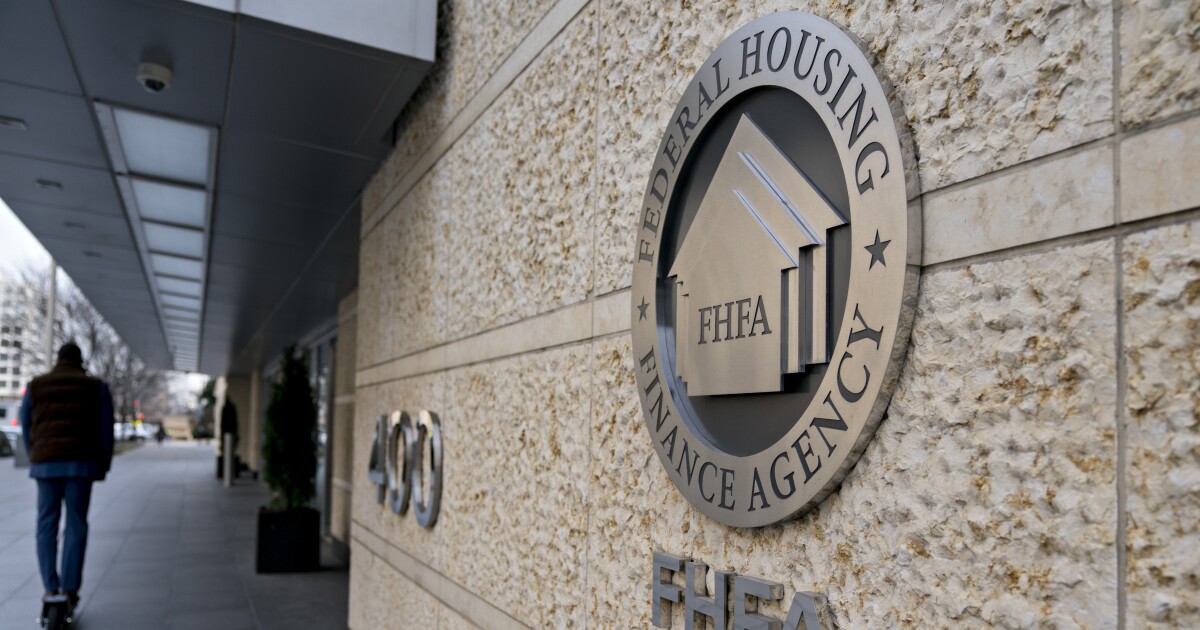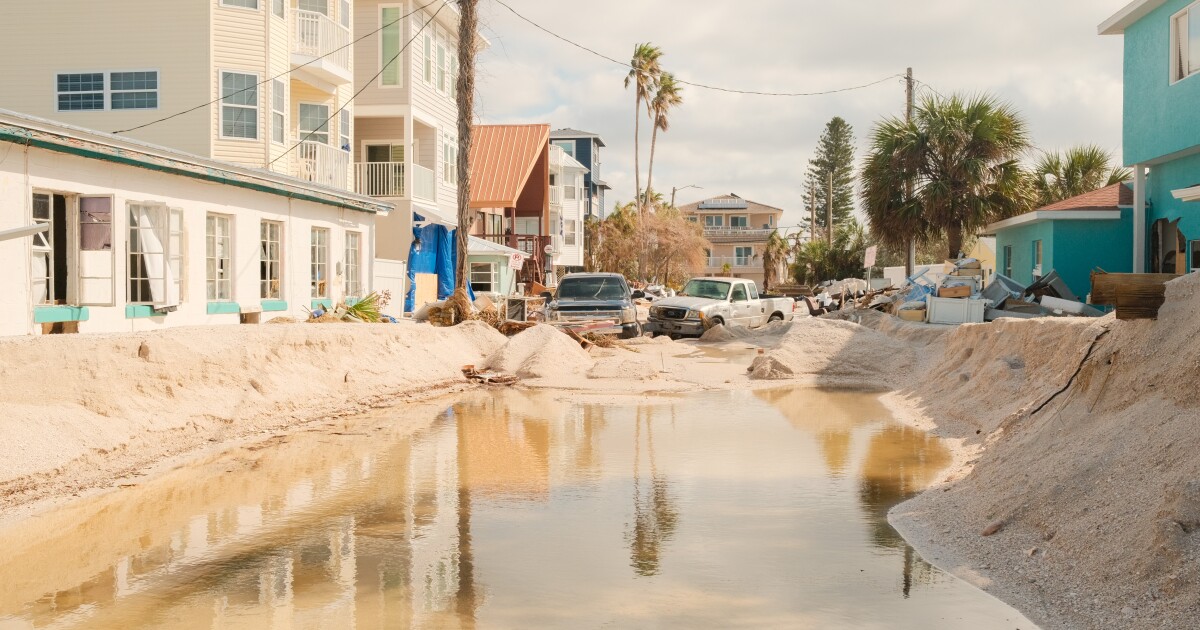
WASHINGTON — U.S. officials will try to shift the Federal Home Loan Banks back to their housing finance roots, rather than having the Great Depression-era program serve as a lender of last resort to imperiled financial institutions, the Federal Housing Finance Agency said in a long-awaited report.
The Home Loan Bank system came under scrutiny amid the banking turmoil of March 2023. In the leadup to the bank failures, the government-chartered lender lent large sums to Silicon Valley Bank, Signature Bank and First Republic, calling into question the FHLB's practice of doling out billions of dollars to fill the short-term liquidity needs of banks that sometimes had very little activity in the housing space.
Although the FHFA, which oversees the FHLBs, had already announced their 100-year review of the program at the time of the March 2023 banking turmoil, the role of the FHLBs in meeting the liquidity needs of the banks that failed in that time prompted inquiries from Congress and affordable housing advocates.
The agency's report Tuesday said the FHFA plans to increase federal oversight of how banks are using the FHLBs and steer more banks toward the Federal Reserve's discount window for liquidity needs in the future. The FHFA will propose a rule that would force many banks to hold at least 10% of their assets in mortgage loans to continue using the FHLBs for liquidity.
The agency will also explore other options for tougher oversight of which banks are using the FHLBs, and look into additional rules and guidance to incentivize housing finance, such as discounted advance rates or differential dividends on capital stock, to members with a strong connection to the housing mission.
The FHFA could also undergo a structural retooling of the home loan bank system, including reducing the total number of institutions. Currently, there are 11 home loan banks, but the FHFA could slash that to eight without legislation from Congress, the report points out.
Ryan Donovan, who serves as the public voice for the FHLBs as the president and CEO of the Council of the Federal Home Loan Banks, said in a statement that the report "represents the beginning of what we anticipate will be a long process."
"Our members know they can count on us through all market conditions, and the overwhelming sentiment from FHFA's review was that stakeholders want more, not less, from the FHLBank System," he said. "Rather than waiting for FHFA to publish its report, the FHLBanks have already begun responding to stakeholder feedback and have voluntarily increased their commitment to affordable housing and community development by 50% above the statutory minimum.
Donovan said that the FHLBs "plan to work with FHFA on ways to enhance the positive impact the System has for its members, the communities they serve, and the broader financial system. We will continue to work with our members, primary regulators, and other stakeholders to ensure that any changes in policy will not negatively impact our clear mission of providing essential liquidity and critical affordable housing and community development funding where it is needed."
Most centrally, the FHFA said in its report that it wants to clearly define the purpose of the FHLBs, which is to both pump liquidity into the housing finance market and to provide member banks liquidity — although with some strong caveats. The FHFA plans to propose a rule that would clarify the mission of the FHLBs and provide metrics and thresholds for how well it's meeting that mission, including a potential standalone mission examination rating.
"A key function of the FHLBanks is to provide low-cost, stable, and reliable funding to creditworthy members, primarily in the form of advances. Many institutions obtain advances in the normal course of their business operations, while others rely on them when facing specific liquidity needs," the FHFA said in the report. "For depository institutions, FHLBank advances can provide liquidity when deposit outflows are elevated, which allows them to continue to serve their communities. This is a particularly important benefit for smaller institutions with limited access to the capital markets."
But the role of the FHLBs has to be distinguished from the Fed's discount window, the FHFA said, which is meant to serve as a lender of last resort. Historically, banks have been hesitant to borrow from the discount window because of a stigma associated with it from markets and the public.
The report calls on the FHLBs to "coordinate with the members' primary regulators" to make sure that banks' borrowing needs can be met. The FHFA also said that the FHLBs' model of providing liquidity primarily through secured advances "should be accompanied by a thorough and regularly updated credit evaluation of their members to avoid encouraging excessive risk-taking."
Specifically, the FHFA said it's concerned with larger institutions — like Signature Bank, First Republic or Silicon Valley Bank — taking out advances and thereby increasing the debt issuance costs for all members.
"During the March 2023 bank failures, the FHLBank System's role of providing low-cost liquidity came under stress, due to sizable advance demand from large members, some of which were significantly bigger than the FHLBanks themselves," the FHFA said in the report. "While the System maintains strong liquidity levels for its size, the FHLBanks generally must issue debt to meet all their members' needs — particularly the largest members. There are also limitations on the ability of debt markets to absorb FHLBank debt in a short period of time, the amount of cash the FHLBanks can hold in interest-bearing deposit accounts or at the Federal Reserve, and the ability of the System to meet sizable liquidity requests late in the day or after debt markets close."
The report continues: "To ensure the FHLBanks issue debt in a manner that accounts for the negative effects that a single large borrower could have on the activity of all members, FHFA plans to take steps to limit large issuances that unduly raise debt clearing costs or debt issuance activity."
During the 2023 market failures, some of the larger FHLB member institutions facing liquidity shortfalls had not established the ability to borrow from the Fed's discount window, "and were therefore overly reliant on the FHLBs," the report said.
Some Democratic lawmakers praised the report. Catherine Cortez-Masto, D-Nev., who's one of the few lawmakers actively engaged in FHLB matters, cheered a section of the report that urged Congress to pass portions of her legislation to double the FHLBs investment in affordable housing and allow more community development financial institutions to become FHLBank members, along with calling on the lenders to invest more in tribal and rural communities.
"I'm glad the administration is prioritizing my recommendations to reform the Federal Home Loan Bank system to ensure they're helping us lower housing costs for Nevadans and for families across the country," she said in a statement. "For years, I've pushed the Federal Home Loan Bank system to do more to address the housing crisis and invest in local communities. Federal Home Loan Banks were created to support affordable housing and economic development, and I'll keep working with both the FHFA and my colleagues in Congress to ensure that they're delivering for American families."
Senate Banking Committee chair Sherrod Brown, D-Ohio, suggested that he'd be open to pursuing some of the recommendations that the report makes for Congress. Brown previously questioned the FHFA on the FHLBs role in providing liquidity to failed banks in the March 2023 turmoil.
"I look forward to working with my colleagues and FHFA to ensure that the system is fulfilling its housing mission and supporting financial stability as our housing system evolves," he said.
Some banking groups thought that the report should have addressed nonbank lenders in the housing finance space.
"[The Mortgage Bankers Association] is disappointed that the report fails to engage in a more meaningful examination of the potential benefits of diversifying the FHLB system through the expansion of membership to other critical providers of mortgage origination, servicing, and investment activities," said Pete Mills, Senior Vice President of Residential Policy at the MBA. "The FHLBs would benefit from a membership base that better reflects today's housing finance system, including independent mortgage banks, who originate and service most mortgages, and mortgage REITs, which are important long-term holders of mortgages and mortgage-backed securities."
FHLB critic Cornelius Hurley, a former independent director of the Federal Home Loan Bank of Boston and longtime critic of the Home Loan Bank system, called the report "a fine start."
"The report argues well for more resources being devoted to affordable housing and community development," he said. "Those resources must be proportionate to the taxpayer subsidy, however."



